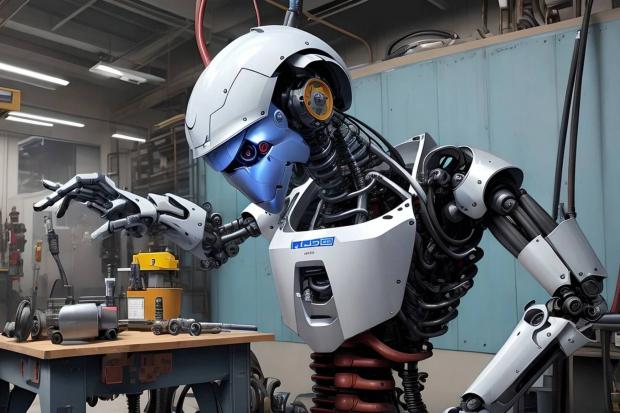
Breaking News
 "You Must Prepare Now" - Doug Casey
"You Must Prepare Now" - Doug Casey
 Will the BRICS 'UNIT' really challenge the dollar?
Will the BRICS 'UNIT' really challenge the dollar?
 The U.S. Just Launched a Secret Dollar Empire (And Nobody Noticed)
The U.S. Just Launched a Secret Dollar Empire (And Nobody Noticed)
 ICE Uses a Growing Web of AI Services to Power Its Immigration Enforcement and Surveillance
ICE Uses a Growing Web of AI Services to Power Its Immigration Enforcement and Surveillance
Top Tech News
 EngineAI T800: Born to Disrupt! #EngineAI #robotics #newtechnology #newproduct
EngineAI T800: Born to Disrupt! #EngineAI #robotics #newtechnology #newproduct
 This Silicon Anode Breakthrough Could Mark A Turning Point For EV Batteries [Update]
This Silicon Anode Breakthrough Could Mark A Turning Point For EV Batteries [Update]
 Travel gadget promises to dry and iron your clothes – totally hands-free
Travel gadget promises to dry and iron your clothes – totally hands-free
 Perfect Aircrete, Kitchen Ingredients.
Perfect Aircrete, Kitchen Ingredients.
 Futuristic pixel-raising display lets you feel what's onscreen
Futuristic pixel-raising display lets you feel what's onscreen
 Cutting-Edge Facility Generates Pure Water and Hydrogen Fuel from Seawater for Mere Pennies
Cutting-Edge Facility Generates Pure Water and Hydrogen Fuel from Seawater for Mere Pennies
 This tiny dev board is packed with features for ambitious makers
This tiny dev board is packed with features for ambitious makers
 Scientists Discover Gel to Regrow Tooth Enamel
Scientists Discover Gel to Regrow Tooth Enamel
 Vitamin C and Dandelion Root Killing Cancer Cells -- as Former CDC Director Calls for COVID-19...
Vitamin C and Dandelion Root Killing Cancer Cells -- as Former CDC Director Calls for COVID-19...
 Galactic Brain: US firm plans space-based data centers, power grid to challenge China
Galactic Brain: US firm plans space-based data centers, power grid to challenge China
AI is Already Being Melded with Robotics – One Outcome Could be Powerful New Weapons

Robot integration into these areas could be seen as analogous to the inclusion of dogs in policing and military roles in the 20th century. Dogs have served as guards, sentries, message carriers and mine detectors, among other roles.
Utility robots, designed to play a support role to humans, are mimicking our four-legged companions not only in form, but in function as well. Mounted with surveillance technology and able to ferry equipment, ammunition and more as part of resupply chains, they could significantly minimise the risk of harm to human soldiers on the battlefield.
However, utility robots would undoubtedly take on a different dimension if weapons systems were added to them. Essentially, they would become land-based variants of the MQ-9 Predator Drone aircraft currently in use by the US military.
In 2021, the company Ghost Robotics showcased one of their four-legged robots, called Q-UGV, that had been armed with a Special Purpose Unmanned Rifle 4. The showcase event leaned into the weaponisation of utility robots.
It is important to take note of how each aspect of this melding of weaponry and robotics operates in a different way. Although the robot itself is semi-autonomous and can be controlled remotely, the mounted weapon has no autonomous capability and is fully controlled by an operator.
In September 2023, US Marines conducted a proof of concept test involving another four-legged utility robot. They measured its abilities to "acquire and prosecute targets with a M72 Light Anti-Tank Weapon".



